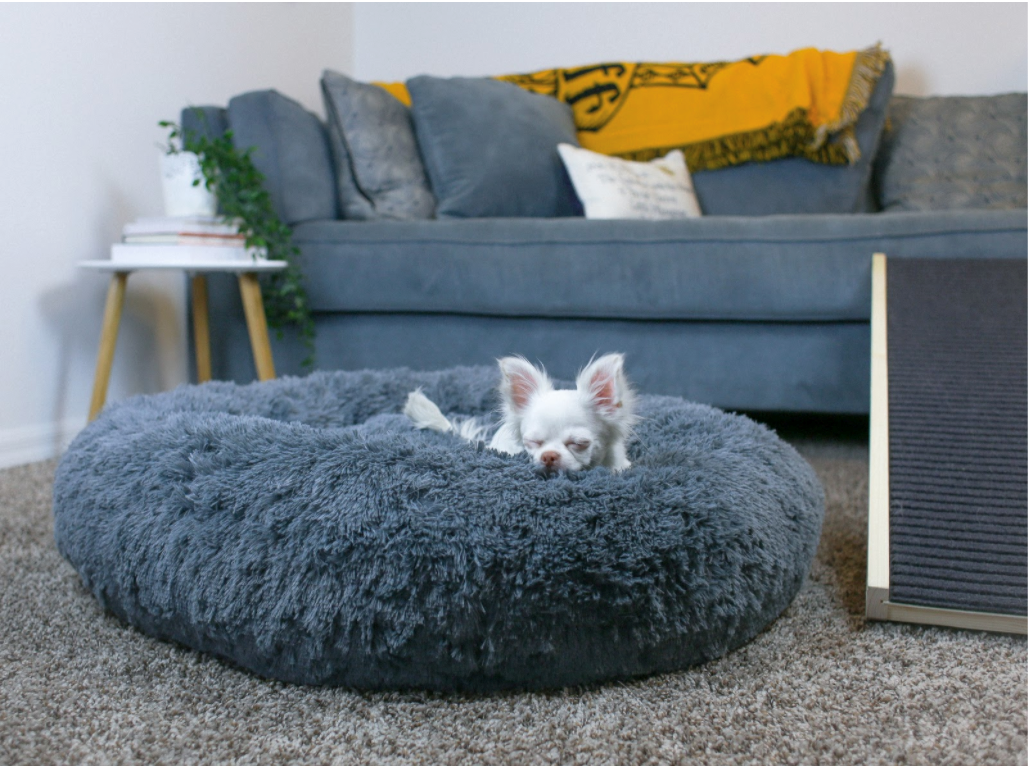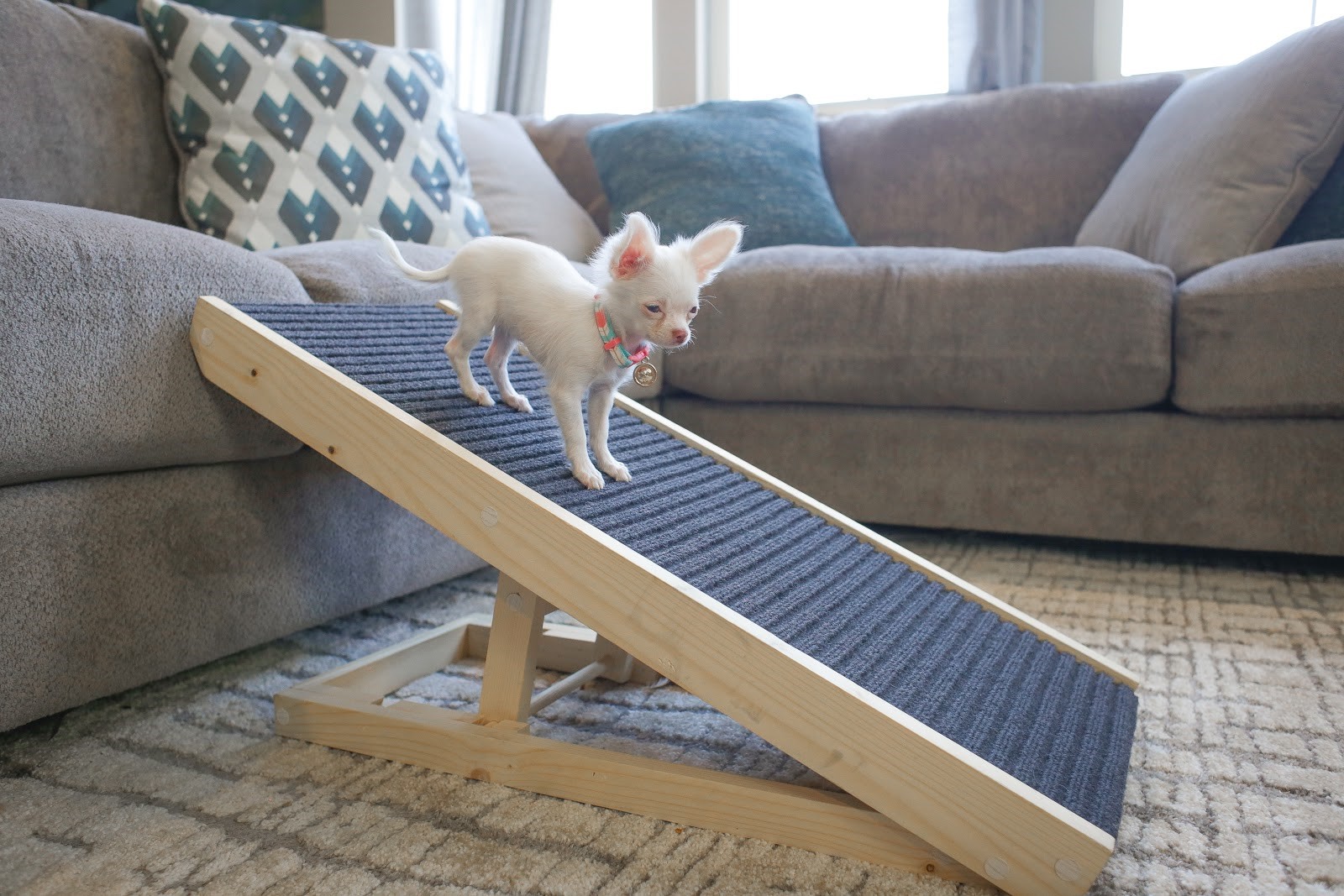- Small Dog Place Home
- Supplies
- Dog Ramps
Dog Ramps: Luxury or Necessity?
Whether you believe that dog ramps are a luxury or ncessity, it's clear that they can make your life easier.
At least that is what I came to believe as my dogs grew older (and so did I). We know the struggle of having to lift our furry friends on and off the bed, couch, or even the car. It's just one step we wish we didn't need to take.
Lifting them can be challenging on several levels, from lifting them incorrectly and risking injuring them accidentally to hurting yourself and your back by bending down many times a day.

Thankfully, pet ramps offer an alternative to lifting your little pup and adds a lot of additional benefits supporting their overall health.
5 Reasons Why You Might Want to Consider a Dog Ramp
Here are at least five reasons why you might want to consider a couple of dog ramps for your small breed dog.
#1: Small Dogs With Short Legs
If you had short small legs, there's a good possibility you wouldn't be able to make it onto that cherished spot on the couch all by yourself.
Reason number one as to why your small dog might need a dog ramp is probably the most obvious one: he physically might not be able to climb on the couch by himself and might tire himself out or injure himself trying to.
Lifting him might not be an issue for his humans, (unless he happens to be a rather heavy small dog) but there is still a sense of independence painfully missing from his mind.
In addition to this emotional struggle, the physicality of not being able to get up the couch can be exacerbated when he is up the couch and needs to come down.
Although you may have trained your pup not to jump off the couch and wait for your help, there are countless reasons why your pup would jump off by himself. For starters, he might not realize the height of the sofa or how hard or slippery the floor is.
He might be startled by a loud noise or might be scared by a loud excited about something happening around him. No matter what the reason, dogs can sometimes be unpredictable. In this situation, it can damage their little legs, and fragile backs as their bodies are not used to such force from the jump.
#2. Dog Ramps Are Helpful for Pups Recovering From Injury
Dogs recovering from injuries are particularly sensitive to repeated injuries.
Long recovery periods may also involve new routines and special care that might be challenging not only to humans but even harder on pets.
Crate training is a sensitive topic, and not all dog owners have their dogs crate trained to limit movement during the healing process.
During recovery, lifting your dog is not always recommended, and sometimes absolutely forbidden to avoid further damage.
Thankfully, having a dog ramp will tremendously limit the risks of injuries or repeated injuries to your dog. By being able to go up and down the furniture he is used to going to, will allow him to keep his routine. It will also lessen the risks of hurting himself more by doing something out of character or out of the ordinary.
A ramp allows you to provide more freedom for your pet rather than keeping him confined to a crate (unless medically advised).
This extra freedom will provide a stress-free place your dog will need to recover and be back to his usual healthy self.
#3. IVDD or Other Joint Issues
Joint health is particularly vital for small breeds, and especially the ones that have short legs and long bodies. These breeds include but are not limited to Dachshunds, Corgis, Cocker Spaniels, Pekingese, Shih-Tzu, and Poodles.
They are particularly at risk of having IVDD, short for Intervertebral Disc Disease. This genetic disorder weakens the disks between the vertebrae in the spine, causing a wide variety of symptoms ranging from mild soreness to paralysis.
The onset of IVDD is quick and needs emergency veterinary attention. A dog ramp can slow the progression of the disease.
By using a ramp, a dog will no longer need to jump which can cause even more strain on the spine.
Because spinal injuries are very common in Dachshunds, a dog ramp is an absolute must-have when it comes to the joint health of small breeds of dogs. Dogs with disabilities or wheelchairs can use a dog ramp and still experience the freedom to get on the sofa by themselves.
#4. Dog Ramps for Puppies
Puppies are known to be a bit more clumsy, rambunctious, and not particularly aware of their bodies or their space. They are also much smaller than their adult counterpart, which puts them at risk of injuries from falling or climbing high furniture.
Ramps can limit injuries and give puppies more independence. Most importantly, puppies have fresh minds, and training them on the use of a dog ramp will be much easier and faster than training an older dog,
There’s something to be said about how fast puppies learn and much they retain. Using a ramp from puppyhood will make it easier if one is needed later in life.
By being part of your puppy’s daily routine, it will build long-lasting habits and will protect your puppy’s back and joints for his future.
#5 Old Age
Similar to humans, dogs tend to start slowing down a bit as they grow older. Consider old age to be similar to pressing the brakes on a car. You’ll come to notice that your pooch starts getting slower and easily fatigued when doing daily tasks.
A lot of pet owners relate this to laziness. Still, they don’t be too quick to judge, dogs simply have a shorter lifespan than we do and therefore age much more quickly.
Along with the natural consequences of old age also comes health issues that can manifest themselves due to old age.
Providing your elderly pooch with a ramp will simplify their life by assisting them with tasks that have simply become harder to perform due to their age. We all need a little help in life sometimes!

Final Words
Reasons for getting a dog ramp might differ. Still, one thing is clear: all dog owners want the best for their furry best friend, to protect their bodies, their joint, and set them up for a bright, happy, active, and healthy future.
About Janice (author and voice behind this site)
Having lived with dogs and cats most of her life, Janice served as a veterinary technician for ten years in Maryland and twelve years as a Shih Tzu dog breeder in Ohio.
Her education includes undergraduate degrees in Psychology with a minor in biology, Early Childhood Education, and Nursing, and a master's in Mental Health Counseling.
She is a lifelong learner, a dog lover, and passionate about the welfare of animals. Her favorite breed for over 50 years has been the Shih Tzu, but she has also lived with Poodles, Maltese, Yorkshire Terriers, Beagles, English Bulldogs, Carin Terriers, and a Cocker Spaniel.
When not writing, reading, and researching dog-related topics, she likes to spend time with her eight Shih Tzu dogs, husband, and family, as well as knitting and crocheting. She is also the voice behind Miracle Shih Tzu and Smart-Knit-Crocheting
Does This Article Deserve Your Thumbs Up?
We always appreciate your support and encouragement. Your thumbs up means so much to us. Please like this article.
If you find this page or any page on Small Dog Place Helpful, or useful in anyway, I'd love it if you would click the small heart found on the bottom right of each page.
You can also share or bookmark this page -- just click on the:

Free Monthly Newsletter
Sign Up for Our Free Newsletter and get our Free Gift to You.
my E-book, The Top 10 Mistakes People Make When Choosing a Dog (and how to avoid them)

